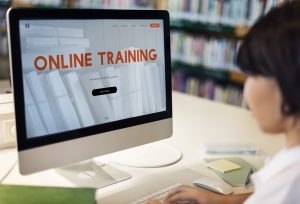The world of IT education is evolving rapidly, but not without its challenges. As technology advances, educators and institutions struggle to keep up with new learning methodologies, ensuring students receive practical, industry-ready knowledge. From engagement issues to outdated resources, IT educators face obstacles that can impact student success.
Here, we explore five common challenges in IT education and how they can be effectively tackled. Plus, we’ll see how Ascend Education is making a difference with innovative solutions.
1. Keeping Students Engaged in IT Courses
With IT being a highly technical field, keeping students actively engaged in coursework is one of the biggest hurdles. Many students struggle with theory-heavy subjects and fail to stay motivated in their learning journey.
Why This Happens:
- IT concepts can be abstract and difficult to grasp.
- Traditional teaching methods may not resonate with modern learners.
- Lack of hands-on learning makes topics seem disconnected from real-world applications.
How to Overcome It:
- Gamification: Using interactive elements like quizzes, coding challenges, and rewards can make learning more engaging.
- Project-Based Learning: Encouraging students to work on real-world projects improves their understanding.
- Practical Training: Incorporating lab exercises and hands-on simulations helps students apply theoretical knowledge.
How Ascend Helps:
Ascend Education provides virtual labs that allow students to work on real-world IT scenarios in a simulated environment. These interactive exercises ensure that students remain engaged while mastering essential technical skills.
2. Limited Access to Up-to-Date Resources
IT is a constantly evolving field, but many educational institutions struggle to provide updated course materials and technologies. Without current knowledge, students may find themselves unprepared for industry demands.
Why This Happens:
- IT textbooks quickly become outdated.
- Colleges and universities may lack the budget for updated software and hardware.
- Rapid changes in technology make it hard for educators to stay current.
How to Overcome It:
- Use Open Educational Resources (OERs): Free, constantly updated online resources can supplement traditional materials.
- Cloud-Based Tools: Providing access to cloud labs and virtual environments can ensure students work with the latest technologies.
- Industry Partnerships: Collaborating with tech companies for updated course content can bridge the gap.
How Ascend Helps:
Ascend offers industry-aligned IT training courses, ensuring students always learn with current technologies and practices. Their platform continuously updates materials to reflect the latest industry trends.

3. Difficulty in Assessing Practical IT Skills
Traditional assessments like multiple-choice exams may not accurately measure a student’s ability to perform in real IT roles. IT education requires evaluating hands-on skills, which can be challenging for institutions.
Why This Happens:
- Standardized testing often focuses on memorization rather than application.
- Assessing practical skills requires time and resources.
- Many educational institutions lack the infrastructure to test hands-on competencies.
How to Overcome It:
- Skill-Based Assessments: Replacing theoretical exams with hands-on coding tests or troubleshooting exercises.
- Live Projects: Encouraging students to work on real-world IT problems.
- Simulation-Based Testing: Using virtual environments to assess how students perform under real-world conditions.
How Ascend Helps:
Ascend integrates performance-based assessments into their courses. Students don’t just answer questions—they perform real-world IT tasks in simulated environments, preparing them for actual job roles.
4. Bridging the Gap Between IT Education and Industry Needs
Many IT graduates struggle to find jobs because their education doesn’t align with industry requirements. Companies look for candidates with practical experience, but traditional curricula often focus more on theoretical knowledge.
Why This Happens:
- IT curriculums may not be updated frequently to match industry trends.
- There’s often a disconnect between academia and industry professionals.
- Lack of internship and apprenticeship opportunities for students.
How to Overcome It:
- Industry-Integrated Curriculum: Collaborating with tech companies to design courses that reflect real-world needs.
- Internship Programs: Encouraging students to gain hands-on experience before graduation.
- Job-Oriented Certifications: Offering specialized courses that align with industry certifications like CompTIA, AWS, Cisco, and Microsoft.
How Ascend Helps:
Ascend Education partners with leading IT organizations to align their courses with industry demands. Their certification-focused training helps students gain job-ready skills, making them more competitive in the job market.
5. Adapting to Different Learning Styles
Students have varied learning preferences, and a one-size-fits-all approach doesn’t work in IT education. Some students grasp concepts through hands-on practice, while others prefer visual or textual explanations.
Why This Happens:
- Traditional classrooms often follow a fixed teaching methodology.
- Limited flexibility in content delivery can hinder some students’ learning.
- Not all students learn at the same pace.
How to Overcome It:
- Adaptive Learning Platforms: Customizing learning paths based on individual progress.
- Blended Learning Models: Combining video lectures, interactive simulations, and text-based materials.
- Self-Paced Learning: Allowing students to study at their own speed and revisit difficult concepts.
How Ascend Helps:
Ascend’s platform adapts to different learning styles by offering interactive labs, video tutorials, and self-paced courses. This approach ensures every student can learn in a way that suits them best.
Conclusion
IT education presents unique challenges, from student engagement and resource limitations to skill assessments and industry alignment. However, with the right strategies—such as hands-on learning, adaptive education models, and industry-integrated courses—these obstacles can be overcome.
Ascend Education is transforming IT training by addressing these issues head-on. Through real-world simulations, updated learning resources, performance-based assessments, and flexible learning paths, Ascend ensures that students don’t just learn IT—they master it.
If you’re looking for effective IT training solutions, check out Ascend Education and explore how they can help bridge the gap between education and industry demands.






